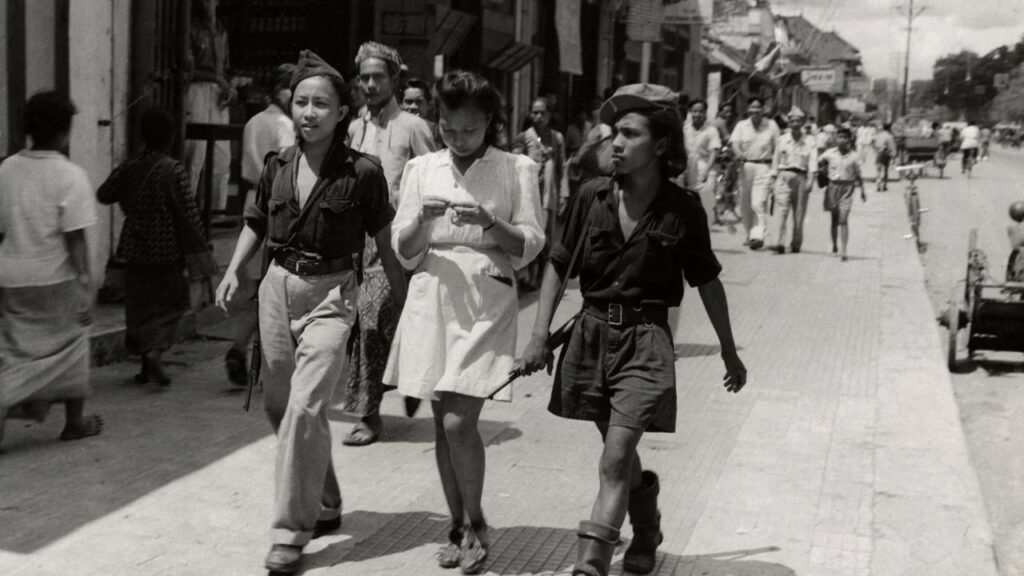
Did the Bersiap murders in the Dutch East Indies have a racist motive?
https://www.nrc.nl/nieuws/2022/01/15/inbox-van-de-redactie-a4079352
Historicus Bonnie Triyana geeft in NRC 12/1/22 naar mijn mening een vooringenomen beeld van het “internationaal perspectief op de onafhankelijkheidsstrijd van Indonesië in de jaren 1945-1949” (zoals de website van het Rijksmuseum meldt over haar aankomende tentoonstelling)
Historian Bonnie Triyana in NRC 12/1/22 gives, in my opinion, a biased picture of the “international perspective on Indonesia’s struggle for independence in the years 1945-1949” (as the Rijksmuseum website reports about its upcoming exhibition)
Namelijk het Indonesisch perspectief. Misleidend, maar begrijpelijk nu de tentoonstelling gaat “om de geest van de revolutie en de strijd om de toekomst van Indonesië”. Ook zijn mening als historicus, dat de term ‘Bersiap periode’ niet bestond in de Indonesische beleving valt binnen dit Indonesisch perspectief. Had hij het hierbij gelaten, dan had ik verder mijn schouders opgetrokken. Maar het past Triyana als historicus even zo goed niet om de bij de Nederlands-Indische gemeenschap wel sterk levende en traumatische ‘Bersiap periode’ te bagatelliseren. Als slechts een onderdeel van de gewelddadigheden gedurende die periode.
Namely the Indonesian perspective. Misleading, but understandable now that the exhibition is “about the spirit of the revolution and the struggle for the future of Indonesia”. His opinion as a historian that the term ‘Bersiap period’ did not exist in Indonesian experience also falls within this Indonesian perspective. Had he left it at that, I would have shrugged my shoulders further. But as a historian it is equally inappropriate for Triyana to downplay the strongly living and traumatic ‘Bersiap period’ in the Dutch East Indies community. If only part of the atrocities during that period.
https://www.nrc.nl/nieuws/2022/01/15/inbox-van-de-redactie-a4079352
De ‘mataglap’ (blinde razernij) van de nationalisten richtte zich ook op inlandse collaborateurs. Maar dat doet niets af aan het feit, dat de Nederlands-Indische gemeenschap toentertijd massaal is afgeslacht. Onder de strijdkreet ‘Bersiap’ of ‘Merdeka’. De witte tot getinte huidskleur – maar ook de taal – was in die periode wel degelijk een reden om vermoord te worden. Ook bij mij in de familie is dat gebeurd. Ongevraagd trekt Triyana de racismekaart en vindt de moorden niet racistisch. De term Bersiap periode zou dat – volgens hem onterecht – wel kunnen suggereren. Het lijkt erop, dat de historicus Triyana ook vindt, dat de Oeigoeren, de Jezidi’s, de Tutsi en de Joden ook niet vermoord zijn om wat ze zijn.
The ‘mataglap’ (blind frenzy) of the nationalists also targeted native collaborators. But that does not alter the fact that the Dutch-Indies community was massacred en masse at the time. Under the battle cry ‘Bersiap’ or ‘Merdeka’. The white to tinted skin color – but also the language – was certainly a reason to be murdered in that period. This has happened in my family as well. Unsolicited, Triyana pulls the racism card and doesn’t think the murders are racist. The term Bersiap period could – wrongly in his opinion – suggest that. It seems that the historian Triyana also thinks that the Uyghurs, the Yazidis, the Tutsi and the Jews were not killed for what they are either.
Maar is mijn lezing wel correct? Wordt de Nederlands-Indische gemeenschap juist beticht van racisme door Triyana? Omdat hij schrijft, dat “altijd primitieve, ongeciviliseerde Indonesiërs als daders van de gewelddadigheden worden opgevoerd, wat niet geheel vrij is van rassenhaat”. Alsof de daders (dus de nationalisten) om hun afkomst worden gehaat. Vanwege hun wreedheden heeft de Nederlands-Indische gemeenschap het recht om de daders te ‘haten’. Racisme heeft daar niets mee te maken.
But is my reading correct? Is the Dutch East Indies community being accused of racism by Triyana? Because he writes that “primitive, uncivilized Indonesians are always presented as perpetrators of the violence, which is not entirely free from racial hatred”. As if the perpetrators (ie the nationalists) are hated for their origin. Because of their atrocities, the Dutch East Indies community has the right to “hate” the perpetrators. Racism has nothing to do with that.
Mocht de vooringenomenheid van de historicus Triyana de opmaat zijn voor de uitkomst van het wetenschappelijke onderzoek naar de gewelddadigheden tijdens de ‘Bersiap periode’, dan wacht de Nederlands-Indische gemeenschap een onterechte schoffering. De reactie van het Rijksmuseum op het artikel van Triyana is dat Bersiap blijft en het Rijksmuseum is niet woke.
Should the bias of the historian Triyana be the prelude to the outcome of the scientific research into the violence during the ‘Bersiap period’, then the Dutch East Indies community will face an unjustified insult. The Rijksmuseum’s response to Triyana’s article is that Bersiap will stay and the Rijksmuseum has not woke up.
Ricky Turpijn, 2e generatie Indo



